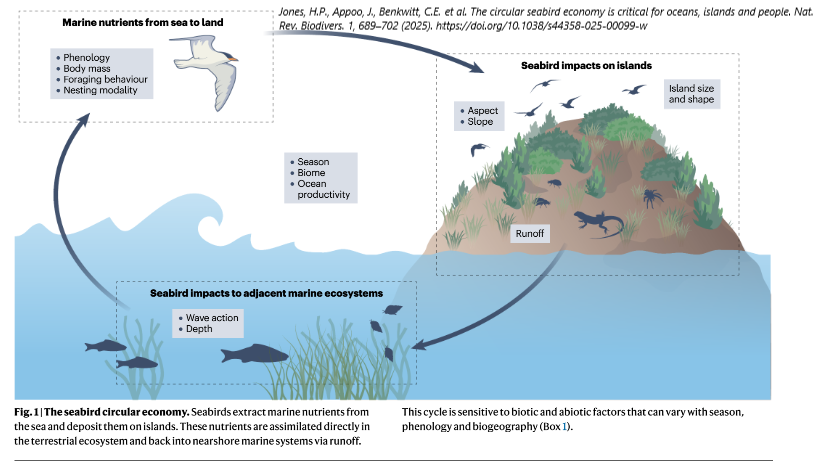
Nearly a third of seabird species are at risk of extinction, rendering them among the most threatened bird taxa globally. The decline in seabird populations has major ramifications for their associated ecosystems. An expansive literature covers seabird impacts on their breeding islands, and growing research expands understanding of the circular seabird economy — cross-ecosystem connections of seabirds from oceans to islands, and back to nearshore marine ecosystems, mainly driven by nutrient transfer. Amid the twin biodiversity and climate crises, maintaining and restoring the circular seabird economy is one way to achieve large-scale, cross-ecosystem impacts with simple and time- tested conservation methods. This Review summarizes researchers’ understanding of the circular seabird economy and outlines goals for future research. Historically, research has focused on terrestrial impacts, with emerging research explicitly studying the cross-ecosystem impacts of seabirds. We identify substantial knowledge gaps, with research needed to understand how the circular seabird economy changes with space, time, across biomes and with island size. Emerging analytic and monitoring tools will helpto propel this research forward. Many coastal communities, especially Indigenous people, rely on seabirds for their livelihoods and cultural connections, and so taking a people-centred approach incorporating Indigenous knowledge and perspectives is critical moving forward.












